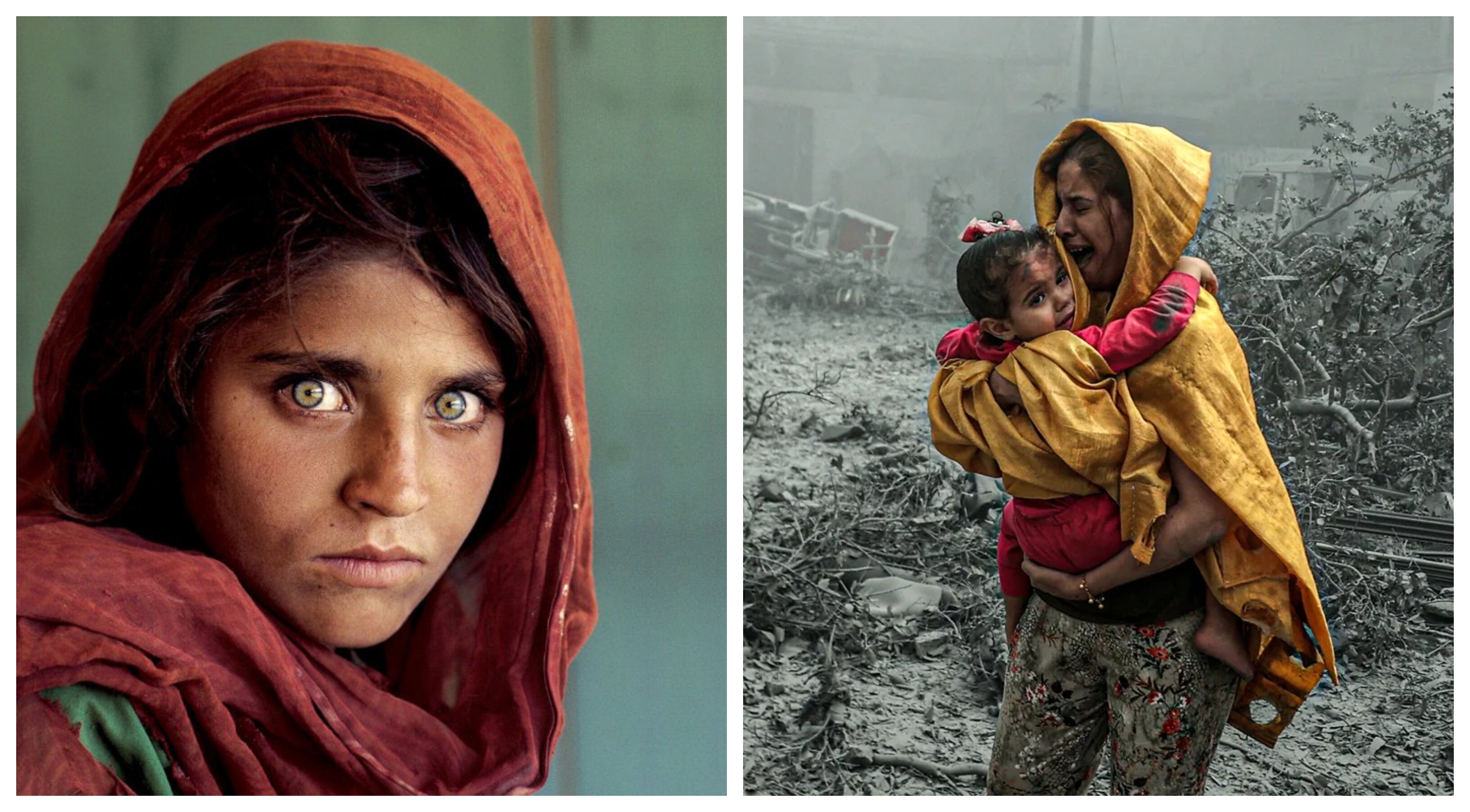Over thirty years ago, Sharbat Gula‘s piercing green eyes, framed by a worn headscarf and a backdrop of war-torn Afghanistan, became etched in global memory in 1984.
Steve McCurry’s photograph, titled ‘Afghan Girl’, graced the cover of National Geographic, transforming a young refugee into a symbol of ‘human resilience’ amidst conflict.
For Sharbat, the impact of that iconic image was far more nuanced – a double-edged sword that brought both unwanted fame and a sense of being reduced to a spectacle. Her anonymity was shattered, and her face, once a private expression of sorrow, became public property. She was thrust into the spotlight, her personal narrative reduced to a single, powerful image. Tourists sought her out, journalists hounded her, and even her safety became a concern.
The Western media’s fascination with Sharbat’s story highlights an important issue: the tendency to reduce complex tragedies to digestible human narratives. While such stories can raise awareness and evoke empathy, they can also risk decontextualizing and sensationalizing suffering.
The focus on Sharbat’s individual plight, while undeniably moving, was prone to overshadowing the broader political and historical context of the Soviet-Afghan War. Her story, consumed by the global audience, became a spectacle, a distant tragedy to be observed and sympathized with, but not truly engaged with. The desire for a relatable, human face to the conflict could inadvertently trivialize the lived experiences of millions of Afghans.
Sharbat’s story also exposes the hypocrisy inherent in the Western media’s portrayal of the ‘Global South’. While amplifying her voice and seeking her well-being, the same media outlets often turn a blind eye to the political and economic realities that contribute to such suffering.
The focus on individual hardship, while important, can distract from the need to address systemic issues like imperialism, resource exploitation, and unequal power dynamics.
Despite extensive research, the question of how to cover human suffering effectively for audiences and journalists remains relevant and critical. Lila Abu-Lughod’s ‘Do Muslim Women Really Need Saving?’ is a powerful and thought-provoking article that critiques the Western narrative surrounding Muslim women, particularly in the context of the War on Terror.
Abu-Lughod argued that the plight of Muslim women is inextricably linked to broader issues of global injustice, such as poverty, war, and economic inequality. She calls for addressing these root causes rather than focusing on simplistic narratives of cultural rescue.
Abu-Lughod’s work serves as a powerful reminder that true empathy and solidarity can only be achieved through a nuanced and informed understanding of the complex realities faced by individuals and communities.
When it comes to the global coverage on the war on Gaza, the media, in its relentless pursuit of immediacy, paints Palestine with broad strokes of human suffering. It shows the victims, the casualties, and the tears. But it rarely delves into the labyrinthine corridors of power, where decisions are made that condemn generations to a life of conflict and uncertainty.
We see the bombed-out hospital, the mother cradling her injured child. We hear the heartbroken father recounting the drone strike that shattered his family. But do we see the web of political decisions that led to these tragedies?
This selective focus, this decontextualization of human suffering, risks turning Palestinians into characters in a never-ending tragedy. Their lives become mere plot points, their stories devoid of agency, and their pain reduced to a spectacle for our consumption.
“Today, my body was a TV’d massacre,” Palestinian-Canadian poet Rafeef Ziadah once eloquently said. “My body was a TV’d massacre that had to fit into sound-bites and word limits.”
When human suffering becomes a headline, and empathy turns into a hashtag, a cold, hard truth settles in the pit of our stomachs: we have forgotten the sacredness of life.
The haunting gaze of the Afghan Girl continues to resonate, serving as a powerful reminder of the human cost of war and the ethical considerations surrounding the portrayal of suffering.
It is a call for deeper understanding, responsible storytelling, and an unwavering commitment to justice, not just for Sharbat and Palestinians, but for all victims of conflict and displacement.
The opinions and ideas expressed in this article are the author’s and do not necessarily reflect the views of Egyptian Streets’ editorial team. To submit an opinion article, please email [email protected].






Comments (2)
[…] Read More […]
[…] post Suffering is Not a Story: Rethinking Media Coverage of Gaza first appeared on Egyptian […]